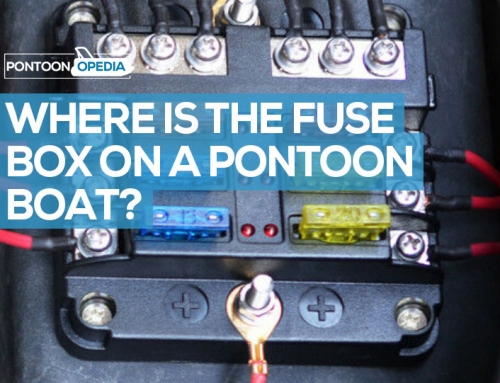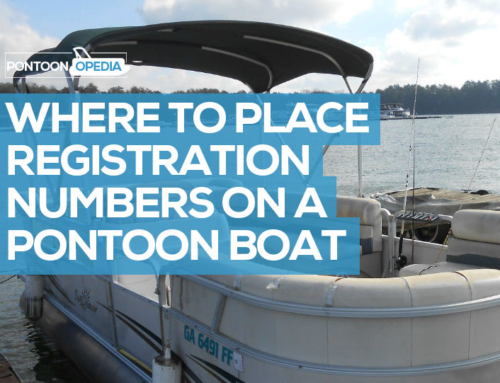Choosing the right anchor for a pontoon boat isn’t always that simple. You need to consider multiple factors, with the most important being the type of bottom your environment has and what you will need to anchor into.
This is really important with rivers where you can have different types of vegetation, muddy bottoms, and debris. Given that rivers typically have muddy bottoms, you will need something that’s going to maximize the surface area that it contacts to get the best grip.
What Pontoon Boat River Anchor?
That’s why I recommend a box anchor, they have always worked best in rivers, and in fact that’s exactly what they are designed for.
For the last two years I’ve had a large slide box anchor. The one I use is still available on Amazon. Go check it out.
The reason they work so well, is due to that grip I mentioned a moment ago. They won’t work at all well in the ocean, but with rivers they really do come into their own.
When you let it out, it can fall on any side and still work. That’s due to the fixed scoop design and narrow side panels. Once you drop this pontoon river anchor it will work its way into the mud and sand and hold fast and tight.
I’ve used it in strong currents, fierce winds, plus rising and falling water levels and never had any issues at all.
If I can give you a critical piece of advice though, and that’s if you do decide to use this box anchor for river pontoon, make sure that you have enough line out.
If the line isn’t long enough, the arms won’t have the correct angle to let it dig into the mud or sand. You won’t get a proper grip and hold. I always advise to have at least 5 times more line than the actual depth of the water your dropping the river anchor into.
For example, if the river is 10 feet deep, make sure you have at least 50 foot of rope and line to let out with the anchor.
The anchor above is what has worked best for me.
An Alternative River Anchor for a Pontoon Boat
However, other pontooners might disagree, as you can buy specialist river anchors. I love the box one though, because I boat on rivers and lakes – it’s a great multi-purpose anchor.
You could also consider this river anchor for your pontoon boat. It’s called a river anchor because it holds very well in fast currents and drift areas and works equally well in rocky, grassy or weedy bottoms. You can see by the photo how well it will grip.
As a disclaimer, I have never used one, I am simply going off what other pontoon boat owners have told me who regularly take their boats onto rivers.
The one above is also available on Amazon.
How to Anchor Your Pontoon on a Riverbed?
You can use any of the two pontoon boat river anchors above on your boat, and they work essentially the same. Pontoons can be a bit tricky to anchor down on moving rivers, mainly due to the deck and extra flotation.
It means you need to anchor down really securely to keep all that boat area stable. But once you get the hang of it, it’s relatively simple.
Here are the steps to follow when you use a river anchor for a pontoon boat.
Step 1: Check River Depth
Even if you think you know the water your boat in like the back of your hand, depths can change due to debris and sand bars.
Figure out what the depth is, perhaps using a depth finder, and then determine how much line you are going to have to release with your river anchor.
Handy Hint: I recommend that you use 5 times as much line as the water depth plus the distance from the water’s surface to your anchor fixture on the boat.
Step 2: Get into Position
Make sure that your anchor is secured to the cleat. It should be secured at the point of the line where you wish it to stop.
Now position your pontoon boat so it’s facing into the wind. If the river’s current is stronger than the wind, point your bow that way instead. Basically, you need to be pointing into the strongest point of resistance, be it the current or wind.
Stop your boat just in front of where you want to drop your river anchor, and the put the engine into idle.
Step 3: Let Your Anchor Slowly Out
Once you’re stopped and happy with your position, you can start to let the anchor out, releasing it into the water.
Don’t throw it, and take your time, as if you don’t your line or rope could become tangled.
If you have positioned the pontoon properly into the river current or wind, then you should now start to drift backwards. This will mean that the anchor will move downwards through the water and away from you as it starts to sink to the river bottom.
Handy Hint: You need to be drifting. If you are static on the water’s surface, then the anchor chain will pile up and not dig in.
Step 4: Start to Reverse Up Slowly
You can now take your engine out of idle mode, placing into reverse, and start to slowly back-up away from the anchor whist releasing the line.
This will start to give you tension in the line as the anchor embeds and catches into the river bed. Keep the tension and don’t let it slack as you reverse as it will reduce the chances of the line or chain tangling.
Step 5: Secure the Rope and Dig In
Once you are happy with your spot, you can secure the anchor rope. Wrap it a couple of times around the anchor cleat, and when you feel that dig in feeling, you can place the engine in idle reverse mode.
Handy Hint: To make sure that you are anchored correctly, look around for a noticeable landmark that you can use as a reference point. By doing so, you will notice if you are drifting.
Step 6: Leaving Your Spot
When it’s time to go you should be able to lift your pontoon boat river anchor straight up vertically if it has been set correctly. By lifting vertically, you can reduce the chances of damaging your pontoon boat.
Once you have the anchor, give it a rinse down, and store it carefully.
Handy Hint: There can be occasions when you will need more than one river anchor for pontoon boat anchoring. In rivers with very strong currents, you might find that with just one you are still drifting.
For maximum anchorage, you can use a heavy chain on your anchor.
One anchor should be positioned off the middle of the pontoon’s bow as this will fight the current and provide less resistance. The second anchor can be used to stop you swinging in the drift.








